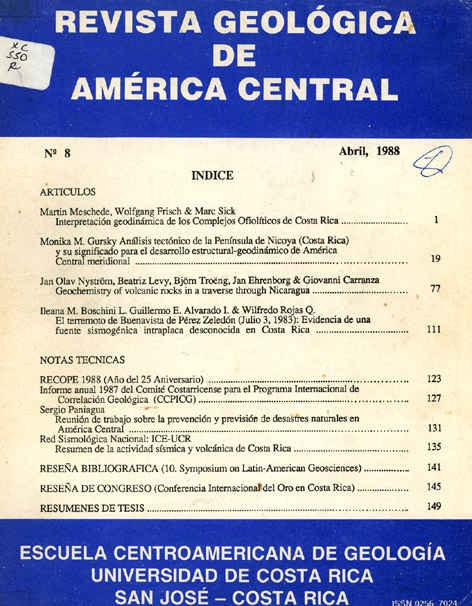Abstract
Major element composition and preliminar trace element data for 138 samples of mainly basic and intermediate volcanic rocks from a cross section between the Pacific and Atlantic coasts of Nicaragua suggests that the present tectonic setting-subdution of an oceanic plate below the western margin of Central American can be extrapolated back to the middle Tertiary.
The samples can be divided into three groups with regard to their chemistry: (a) the Recent to Tertiary volcanics from the entire traverse, (b) Cretaceous lavas from the Siuna mining district in NE Nicaragua, and (c) young basalts from Corn Island off Bluefields on the Atlantic coast. Teh first (and by far the largest) group are calc-alkaline volcanic arc lavas beloging to the high-alumina series. Many of them (especially those of the Tamarindo Formation and Recen lavas in NW Nicaragua) have tholeiitic affinities, consistent with the thin crust in this part of Central America. However, a common feature is an anomalous enrichement in Ba-rich active ridge sediments of the subducting oceanic plate. Crustal contamination is another possible explanation for the high values of Ba and other large-ion lithophile elements, especially for the volcanics in NE Nicaragua, where the influence of a towards NE, away from the trench. Crustal contamination is clarly evident in the second group, the Siuna lavas, which have a shoshonitic affinity. The third group -the Corn Island basalts- have chemical features inconsisten with a subdution.related origin, being similar to some within-plate basalt of oceanic islands.


